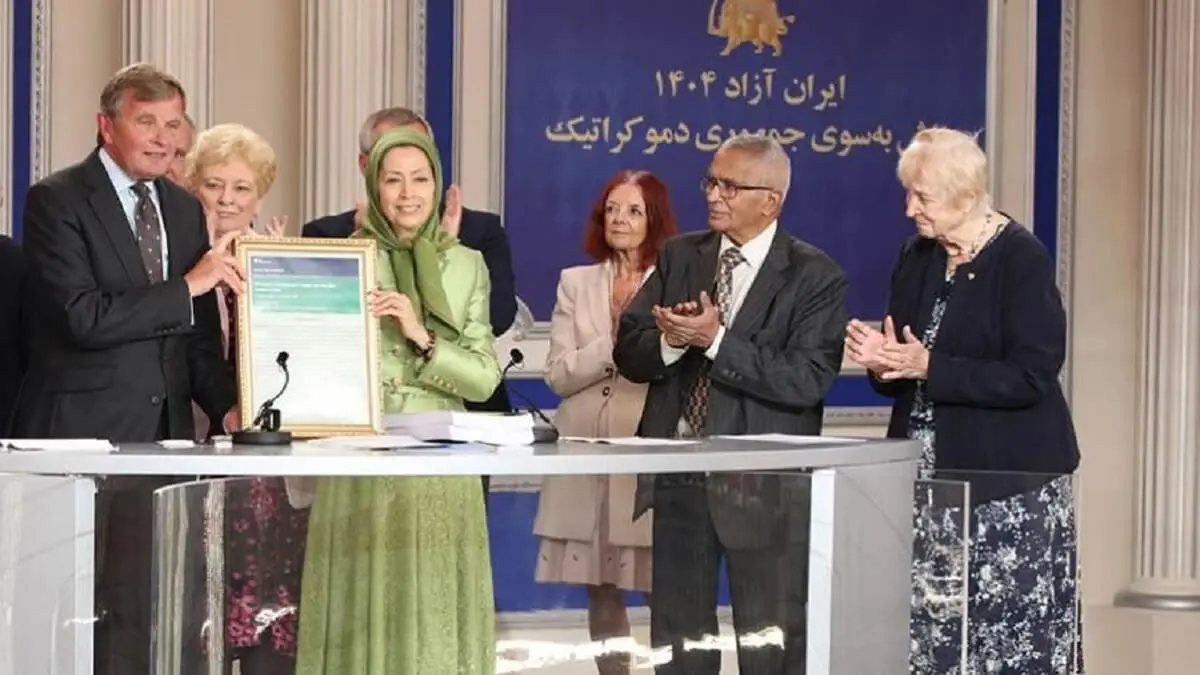The third way: the only way out of the Iranian crisis

- Between war and complacency: a dead end that must be avoided
- A Resistance rooted in the people
- A credible plan for democratic transition
To prevent a new uprising – potentially decisive – the religious dictator has lit the spark of war. Just as few believed in the end of the Syrian regime, many still find it difficult to envisage the imminent fall of the Iranian regime.
The war that began on Friday 13 June marks the start of a particularly critical phase, both for the region and for the Resistance. But the real confrontation is between the Iranian people and the theocratic dictatorship, a struggle that has been going on for 43 years. The regime founded by Khomeini has systematically tried to hide this fundamental struggle by stirring up external conflicts.
The only viable solution is the overthrow of the regime by the Iranian people and their organised resistance.
Between war and complacency: a dead end that must be avoided
The international community does not have to choose between a war imposed by the regime and a policy of complacency that has allowed the regime to prevail. There is a third way.
On 18 June, Maryam Rajavi, President of the National Council of Resistance of Iran (NCRI), stated during a speech in Strasbourg at the European Parliament: 'Today we see that complacency has effectively led to the imposition of war. Once again, I insist that peace and security in this part of the world require regime change in Iran, brought about by the Iranian people and their Resistance.'
In 2002, the NCRI revealed the existence of the regime's clandestine nuclear programme. Since then, through conferences, speeches and articles, it has warned against the danger of a nuclear-armed Iran, but above all against regional interference, which is a hundred times more destructive.
However, these efforts have led to a paradoxical situation: while the NCRI was included on Western terrorist lists and only removed from them in 2012, the regime continued to enrich uranium with complete freedom!
After the 2015 agreement, despite the release of $150 billion in frozen assets, the regime continued to enrich uranium to 60%, reaching the level of material needed for ten bombs. It then set the region ablaze with its militias. International passivity allowed this war to be imposed amid bloodshed and chaos.
A Resistance rooted in the people
Despite the massacres of 1981 and 1988 – including the execution of 30,000 political prisoners – the Iranian Resistance has remained standing. Strengthened by an unbreakable bond with the people, over the last decade it has established resistance units throughout the country.
Today, these thousands of units, active throughout Iran, defend both national unity and the aspiration for democracy. In just one year, they have carried out more than 3,000 actions against repression and thousands of awareness-raising campaigns.
Many of these young people belong to Generation Z, and their slogans include ‘No to imposed government, no to imposed religion, no to imposed hijab’. Their strength lies in their organisation, their resilience and their unwavering belief in a free future.
A credible plan for democratic transition
For six decades, the PMOI, a pillar of the Iranian Resistance and a founding member of the NCRI, has resisted two dictatorships.
For more than 40 years, the organised Resistance has had a written and public transition programme. The NCRI plans to govern for only six months after the fall of the regime, the time needed to organise the election of a Constituent Assembly to draft a new Constitution. Power will then be transferred to this elected assembly.
The Resistance has proven that it is capable of establishing a democratic republic in Iran, where every citizen, regardless of their origin or beliefs, can express themselves freely. Thanks to a parliament in exile and the assignment of key responsibilities to women, the Resistance says loud and clear: ‘Neither the dictatorship of the Shah nor that of the mullahs.’
Its goal was to heal the century-old wound of a tyranny that, whether monarchical or religious, had divided the peoples of the region.
In this decisive period, the Resistance will not back down. It will continue its march towards a free Iran, and history will once again confirm its popular legitimacy.
Article previously published in La Dépêche



